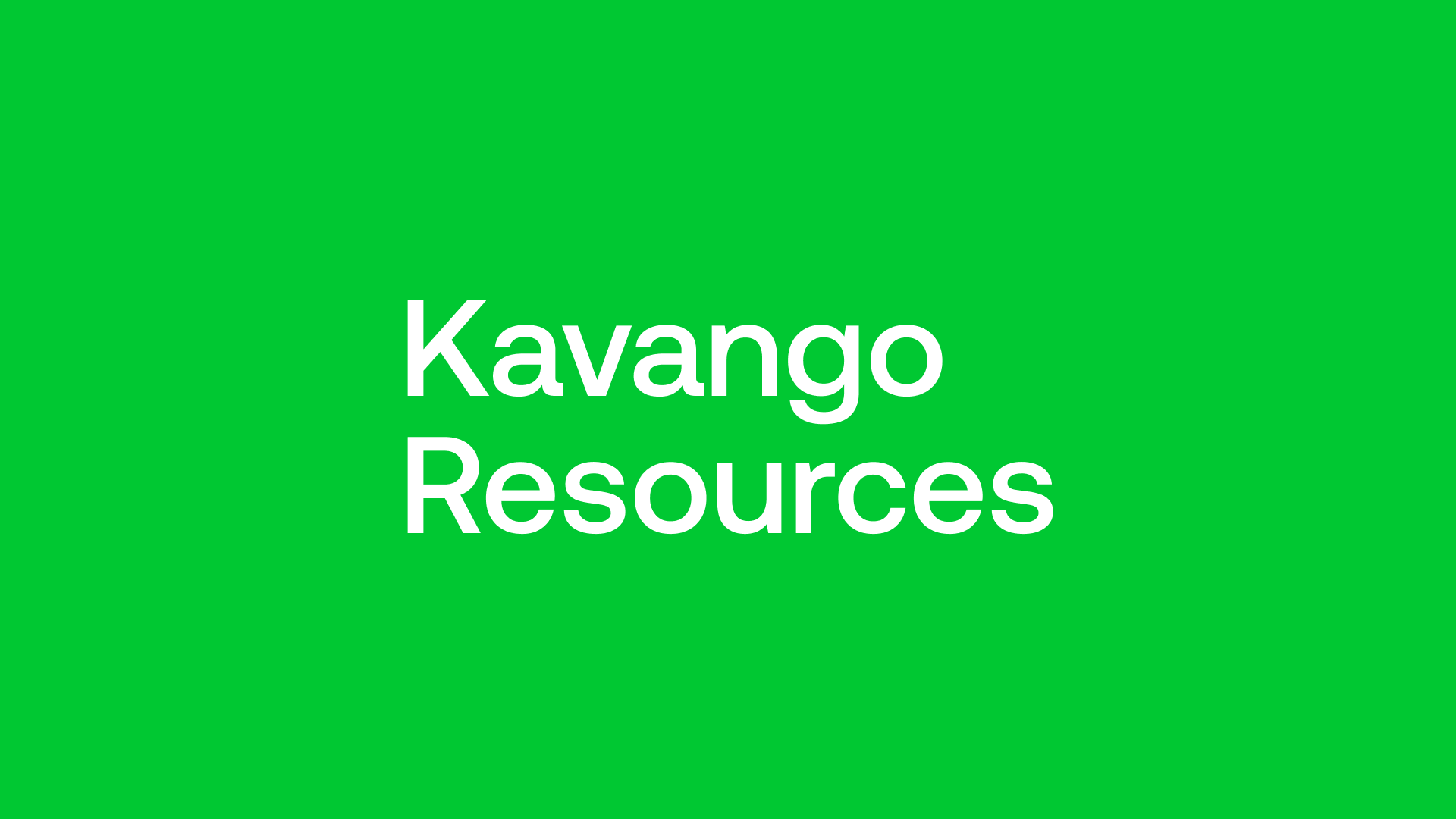Kavango Resources (KAV) - Starts Drilling To Prove Hypothesis

Interview with Ben Turney, CEO of Kavango Resources
We spoke with Ben Turney, CEO of Kavango Resources, a company that is focused on metal exploration in Botswana. He gave us a detailed overview of the company’s activities there, and particularly on the drilling program at their Kalahari Suture Zone Project.
Overview of Kavango
Kavango Resources, founded in 2017, is a base and precious metal explorer operating in Botswana, focused on finding copper, nickel, silver, platinum group elements (PGE), and rare-earth elements (REE).
Kavango is based in London, England. Its shares trade on the LSE and OTC markets. The company has over 188,000,000 shares outstanding.
Leadership at Kavango
The Kavango management team has an excellent track record of discovery, development and financing of mineral deposits worldwide, particularly in Africa. In addition to Turney, the leadership team is composed of David Smith, Non-Executive Chairman; Mike Moles, Founder and Executive Director; Michael Foster, Non-Executive Director; Hillary Gumbo, Founder and Executive Director; and Edgar Chiteka, Exploration Manager.
Company Projects
Kavango’s main project is the Kalahari Suture Zone Project (KSG), in southwest Botswana. This project, covering 7,554 sq. km., encompasses 12 prospecting licenses and is associated with a large magnetic anomaly. The company is hunting for copper, nickel, and PGE hosted by a mass of mafic intrusive rocks that produces the magnetic anomaly.

The company is also focused on the Ditau Camp Project (DITAU) and the Kalahari Copper Belt Project (KCB). The DITAU holdings are associated with at least ten ring-dike complexes and may be prospective for PGE and REE. KCB is prospective for sediment-hosted, strata-bound copper-silver deposits.

Botswana Economy
Located in southern Africa, Botswana is one of the most business friendly countries in Africa. It is also one of the fastest growing economies in the world. The main commercial activities are mining, tourism and livestock.
Mining has been taking place in Botswana since the 1800s. Diamonds are the leading component of the country’s mineral sector. Botswana also produces coal, cobalt, copper, gold, nickel, PGM, semi-precious gemstones and silver.

The Turnaround Story at Kavango
Turney came to Kavango initially as a consultant. His original role was to advise the company on its investor relations strategy that, up to that point, had been fairly lackluster for the business. His initial work culminated in a fund raising of £2M in November 2020. In June 2021, he was asked to become the CEO.
The turnaround that was envisioned was largely focused on the company market profile. Kavango was originally listed in 2018 and its narrative didn't really catch hold in the market. The company is now engaged in explaining to investors not only its main projects but also the competitive edges it brings to the table.
In a nutshell, Kavango is looking to unlock resources that, from a geological point of view, are not visible on the surface because they are buried by what is known as Kalahari cover, a surficial deposit of unconsolidated sand and other materials that make mineral exploration quite tricky.
Of late, the share price has been doing quite well. In part this is due to the high price of copper. In addition, Turney contends that the market really is starting to understand the progress that Kavango is making.
Company Philosophy and Current Team
Kavango was founded by Mike Moles and Hilary Gumbo back in 2012. It was a private enterprise for about 6 years. Mike's a geologist; Hilary is a geologist and geophysicist. They were previously involved with a company called Reunion Mining. They had a lot of success with that about 15-years ago and they were looking for a new challenge. They picked Botswana for two reasons: it’s economic stability and its prospective geology.
Moles and Gumbo are technologically driven leaders. Gumbo has tremendous vision geophysically and that translates into the company philosophy: By deploying the latest, sophisticated, remote-sensing technologies into the region they believe that they have a competitive edge in seeing below the Kalahari cover. Some of that technology is proprietary to Kavango. In addition, the company is also pioneering a new soil-sampling process.
Over the last few years, the company has built up a fantastic team in London and in Botswana. They have brought in a refreshed degree of dynamism and entrepreneurialism to the business.
Funding Summary
The company raised £2M late in 2020. This was an important springboard for the company coming into 2021. They’ve just recently raised another £2M. Kavango now has a cash chest of £3.5M and a warrant bank of £7.5M. They are now extremely well funded right through to the end of 2021. Kavango’s annual overhead expense is about £460,000, which is extremely competitive compared to everybody else. They intend to put every pound possible into the exploration program.
Eventually, they will need more money and the major funders would like to see some evidence of future success in the core they intend to obtain. It’s still too early for formal joint ventures, so they've taken a creative approach of setting up what amounts to several “mini JVs”. They have a strategic relationship with a company called Spectral Geophysics, ground-based surveying firm. They are now also in discussions with Equity Drilling, with a view to setting up a drilling partnership so that we can really accelerate their drilling program.
Kalahari Suture Zone
The KSZ Project focuses on a north-south-trending crustal suture zone in southern Botswana. The suture is 450-km long and 50 km wide. Kavango is exploring a mafic and ultramafic intrusive complex that forms the main part of the KSZ. The company is targeting magmatic Ni-Cu-PGE sulfide accumulations related to the intrusive bodies. The sources of metals in these rocks originate from magmatic fluids that emanated from their mantle sources.
The project carries some risk: The target zones are in the subsurface and in an area that is relatively underexplored. The company has three targets in the KSZ that they're about to drill. The most important prospect is called B1. It’s characterized by a very high conductance reading, which strongly suggests ore-bearing mineralization.
These targets may be examples of Norilsk-style ore bodies, named after the Norilsk-Talnakh region in northern Russian where some of the richest magmatic sulfide deposits in the world are associated with a large igneous province. The geophysical signature that was emitted from this KSZ location is very similar to what was seen in Norilsk and the geological setting is very similar as well. The particular rocks that are being looked at by Kavango are 190 million-year-old gabbros, similar in age to the host rocks at Norilsk.
The airborne surveys run by Kavango have delineated the geometry of the overall gabbroic subsurface body. It is a keel-shared feature that rose up through the suture zone. If it is like Norilsk, the richest ores will be found at the bottom and gull-winged-shaped sides of the keel.
The theory works like this: When the gabbroic magmas rose, they passed through coal-bearing sedimentary strata. Sulphur from the coal beds are believed to have contributed to mineralization within the KSZ project. In essence, as the magma moved up it melted the coal, and then the sulphur in the coal then interacted with the nickel, copper and the PGE to form a much heavier, denser, immiscible liquid that sank to the bottom of the magma chamber. Ore minerals then precipitated out as the magma cooled.
In 2018 and 2019 Kavango flew airborne geophysical surveys over the feature. This produces a detailed 3-D model that is being used for explorations purposes. Subsequent exploratory drilling has refined the model considerably. The company has identified several dozen of these very characteristic Norilsk-style keel and gull-wing formations.

KSZ Drilling and Technology Program
The company is about to engage in a drill campaign to test their hypothesis in the KSZ. The three targets have been further evaluated pre-drill using a technique called time-domain electromagnetic surveying (TDEM). This technique measures the conductivity of the rocks and minerals in the targets. The anomalies are presenting readings that fall within the range of readings one would expect for magmatic sulphide ore-bearing bodies, and additionally, they're also located at an encouraging geological setting at the bottom or just outside of these keels.
And as a result of this and the fact that the company has been able to raise more money, they’ve mobilized a rig to the field. At the time of our conversation with Turney, it was about to commence drilling target A2. Kavango intends to collect samples from the bottom parts of these prospective keels with this drilling. Total depths will range between 450 m to 530 m. They certainly aspire to intercept ore mineralization with these holes, but, at this stage of the game, the main goal is to analyze core obtained form the bottom of these keels to prove up that they have a magmatic-sulphide system on their hands.
As mentioned, a big challenge is seeing through the Kalahari cover in order to better image the deeper objectives. At depth there are actually two occurrences of gabbro. The prospective one is the geologically younger gabbro emplacement. The new TDEM survey that Kavango is utilizing is able to make the distinction between the two different gabbro types and is guiding the planned drilling routes into the subsurface. Earlier exploration attempts at the KSZ didn’t have this advantage. In fact, one of the geophysicists who led an earlier exploration attempt some 30 years ago with less advanced technology is now consulting with Kavango on the current exploration program.
The company expects to release news about these holes as soon as possible, perhaps as soon as late August 2021. Assay results may be forthcoming as soon as September.

Work at Other Projects
Although most of their attention is on the KSZ Drilling program, Turney and the company have not forgotten their other assets. They are putting together environmental management plans for their KCB Project. When the drilling is finished at KSZ, they intend to move the rig to KCB straightaway.
They have also just announced seven drilling objectives at the DITAU Project. It's an interesting REE project that is a bit lower down on their portfolio order listing. Production of REEs would be something new for Botswana.
As far as their mini-JVs go, they are also looking at developing a larger relationship with the drilling company, Equity Drilling. They are in advanced discussions with these talented and experienced drillers to become the operator of their Kavango drilling subsidiary.
The mini-JCV that they are working on with Spectral Geophysics is also moving forward. Kavango paid £100,000 in equity into Spectral Geophysics in order to get them heavily incentivized. In return, Spectral has placed their best people on the projects, upgraded their equipment, and are churning out superb surveys at a high rate of speed.
Final Words
Turney closed out our conversation with a few simple take-aways: It’s all about drilling this summer. Stay tuned because there will be a strong news flow coming out.

To find out more, go to the Kavango Resources Website
Analyst's Notes




Subscribe to Our Channel
Stay Informed























